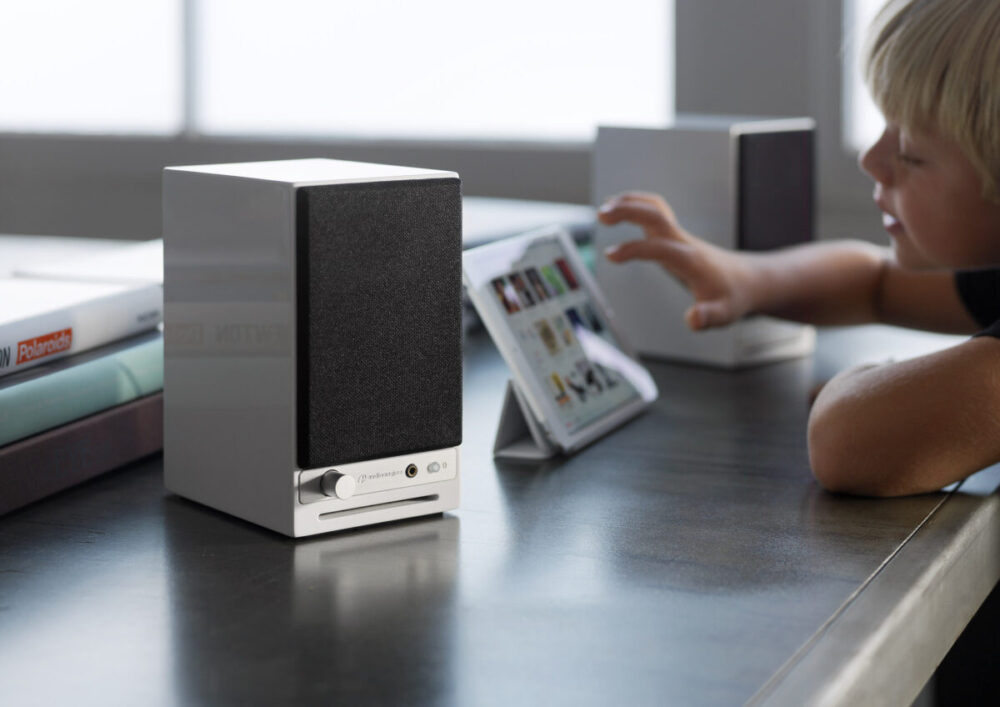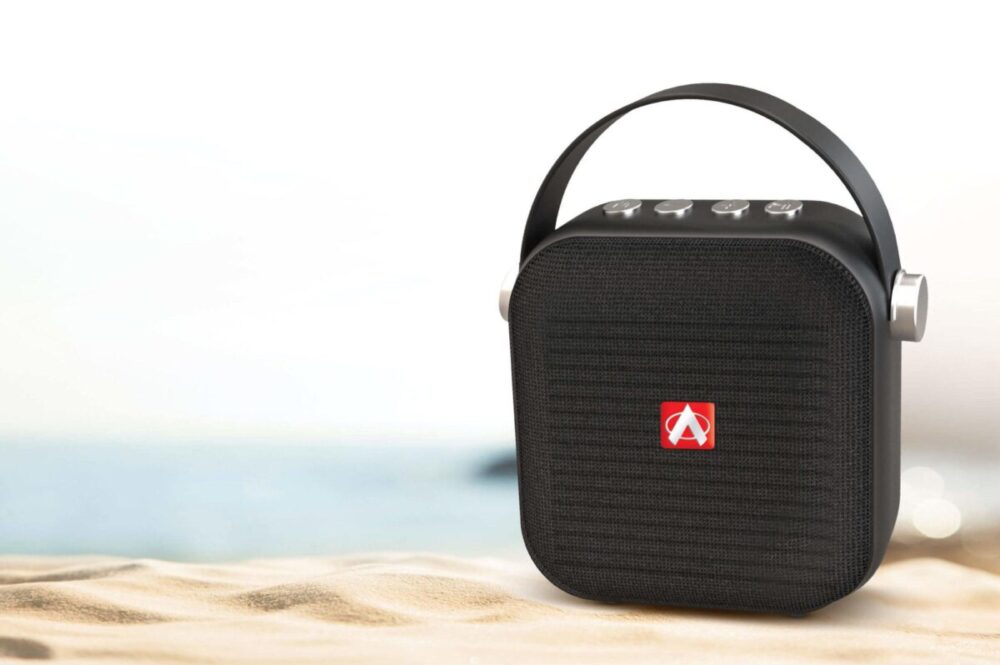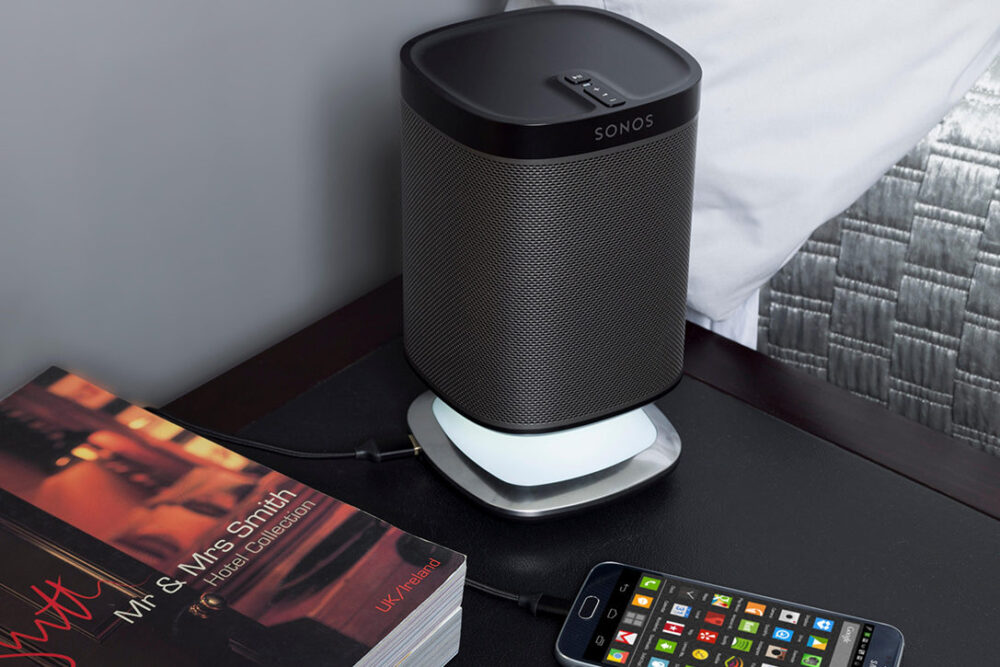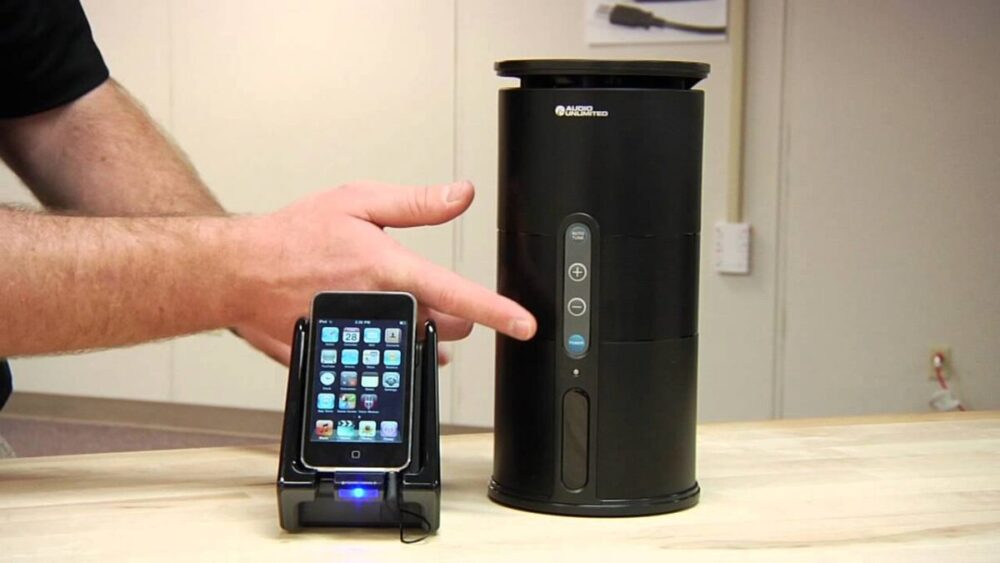Wireless outdoor speakers allow music to be enjoyed outside the house: garage, porch, pool, deck, or backyard. They can also be used as a shower radio or to pipe music into multiple rooms inside the house. All without the hassle of laying down speaker wires. The music source can be any device with a headphone socket: mp3 player, TV, radio, computer (Internet radio, mp3).
Depending on the sound quality, waterproofing, power (typically 5 to 20 watts RMS, up to 100 watts), and a number of speakers (usually 1 to 4), they can cost from less than a hundred to a few hundred dollars. Popular brands include Element (Ewos1), Acoustic Research (AW842), Advent, ZipConnect, Jensen, Audio Unlimited, TIC Corporation (WRS010), and AQ.
Indoor Versus Outdoor Wireless Speakers: Waterproofing and Sound Quality

Outdoor speakers might only be resistant to light rain. Phrases such as “all-weather” and “weather-proof” usually indicate better water resistance than just “outdoor”. Even better are speakers that are rated to MIL-STD (military standard) or other waterproofing standards.
Some designs place the speakers inside what is basically an upside-down plastic bucket, to protect them from rain. This obviously muffles the sound a bit but does create a 360-degree distribution of sound, which is useful in many outdoor situations.
Other outdoor models (including those that look like a rock) have standard side-facing speaker cones protected by a grill. They should have roughly the same sound directionality and sound quality of similarly priced indoor type gadgets. They are usually, but not always, less waterproof than the upside-down bucket designs.
Some speakers are advertised as dual-use indoor/outdoor designs, but any outdoor speaker can be used indoors.
Wireless Speakers Proper Positioning and Soundbar Connectivity

Indoor audio devices, like the Naim Audio Active Ovator S-600, need proper positioning inside the room to produce the best audio. The Operators are very sensitive to room positioning. If this is not right, the bass can easily become uncontrolled and poorly defined. Unfortunately, the positioning has to be got right to within inches, and shifting the brutal 60kg weight of each loudspeaker is no fun at all; you really need two people to do this safely.
This applies to both the passive and the active version, and though activation may slightly tighten up the low-frequency definition, it did not make the Ovation any less sensitive to getting the room positioning right. To a lesser extent, the positioning of the listener also mattered and seemed to be better a little way out from the wall.
Wireless speakers are often connected with tv soundbars as well, which also should be a part of your plan about where to position each audio gadget. Some high-performance soundbars, like this selection of top models by The Product Analyst, can easily pair with your wireless speakers despite the position. Others, however, need a strategic placing for the best sound.
How Wireless Speakers Work: Analog and Digital

Many wireless models use the same frequencies (900 MHz or 2.4 GHz) and technologies as baby monitors and cordless phones. Consumers who write reviews on websites such as Amazon, sometimes report picking up signals from their neighbor’s baby monitor or cordless phone. These are analog systems. They should have a few different channels to avoid interference.
Newer digital designs are claimed by manufacturers to be immune to interference. They use technologies such as Frequency Hopping Spread Spectrum (FHSS). Examples are the Soundcast SOU-ICO410 OutCast, and the Cables Unlimited SPK24G.
Analog and digital systems have roughly the same range: typical specifications are 50 to 150 feet in the open air, less if blocked by walls.
How to Choose Wireless Outdoor Speakers

Speakers that are used in covered areas require less waterproofing. If they can be carried in and out of the house as required (or need to be moved around), waterproofing is also less important, but battery issues become significant if power outlets are not available. These speakers are like guitar amps: they have carrying handles and are placed on the floor.
The relatively high power requirements mean that up to eight C or D cell batteries are used for each speaker, and typically last only a few hours. The cost of replacement alkalines means that rechargeable NiMH batteries make a lot of sense, but the cost of so many large rechargeable batteries can be more than the cost of the speakers. Proprietary built-in rechargeable batteries are convenient, but replacements depend on the manufacturer.
Some audio systems are mono only. Any stereo audio source is mixed together and played out through each speaker. More flexible are those that can be switched to mono, left stereo or right stereo.
If the music stops (end of mp3 playlist, no audio signal), a loud and annoying static hiss results on some systems. Other systems will automatically power down the speakers, requiring a manual power up to resume. The speaker’s volume level should be remembered, not reset at each power-up. These small details can become irritating deal-breakers in daily use.
Wireless Outdoor Transmitters

An automatic volume level control feature is useful, especially when playing mp3 files recorded at different loudness levels or switching between different sound sources (mp3, radio, tv, PC). Failing that, a separate automatic volume control unit, such as the Terk VR1, can be used.
At the minimum, the transmitter will have a standard headphone-style 3.5mm stereo jack to plug into the audio source’s headphones socket. This will usually cut off the speakers on the audio source. To play music from both the existing speakers and the wireless speakers, both the audio source and the transmitter should have analog RCA audio sockets (this can be fudged at the transmitter end with an RCA to headphone conversion cable).
The Best Wireless Outdoor Speakers

Choosing the right wireless outdoor system is more complicated than might be expected. Homeowners need to consider RMS power, waterproofing, portability, sound quality, and system expandability. Searching the Internet for reviews of specific models is always a good idea. You can find blogs and websites dedicated to reviewing audio gadgets and accessories, which can greatly help in your decision-making process. While proper research should be enough if you’re ordering online, it’s good to check the items out in your local stores as well. This practice gives you a chance to experience the audio performance of the speaker, soundbar, headphones, or any other audio device you’re purchasing.





